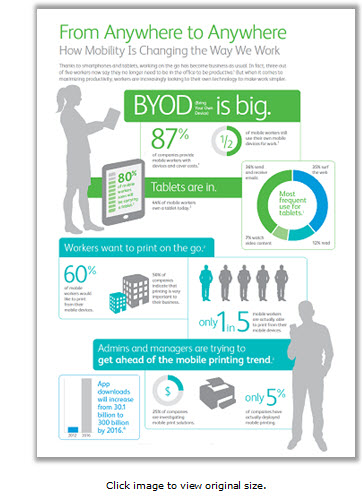If mobility is strategically important, you can’t ignore print.
By Conrad Mills, Services Marketing manager, Large Enterprise Operations, Xerox Europe
Every year at its Symposium/ITxpo, Gartner reveals the technology trends it believes will be the most strategically important to businesses for the next few years. Looking down the list for 2014, it’s immediately obvious that the majority of these relate to the impact of mobile devices and cloud computing.
 As Gartner puts it, mobile workforces are doubling, even tripling, as BYOD programs take hold; and this has wide-ranging implications for the provision of IT.
As Gartner puts it, mobile workforces are doubling, even tripling, as BYOD programs take hold; and this has wide-ranging implications for the provision of IT.
One of the things that people want to do through their mobile devices is print documents. We still have some way to go before the paperless office is a reality, and we know that people get frustrated when they can’t print ‘on the go’.
For the majority of employees this frustration is all too real, because only a minority of organizations provide mobile print capabilities today. Our own most recent survey of IT leaders, taken at Symposium in Barcelona, suggests that not much more than a third of companies currently support mobile print.
But this is changing: a year ago only a fifth of organizations offered mobile print, and given the strategic importance of mobility, I fully expect this upward trend to continue. In “the era of personal cloud”, as Gartner puts it, enterprises have to deliver services that are device-agnostic — or at least work across multiple devices. Print is no exception.
There’s no technological reason not to offer mobile print: secure, convenient mobile print solutions certainly exist and are being used by organizations of all sizes and types. If you’re interested in some of these uses, see the customer stories on our mobile print page.
Print doesn’t always get the attention it needs from IT, but given its importance to employees, it seems clear to me that any organization planning for a more mobile and cloud-friendly future needs to put a mobile print solution on the agenda.

